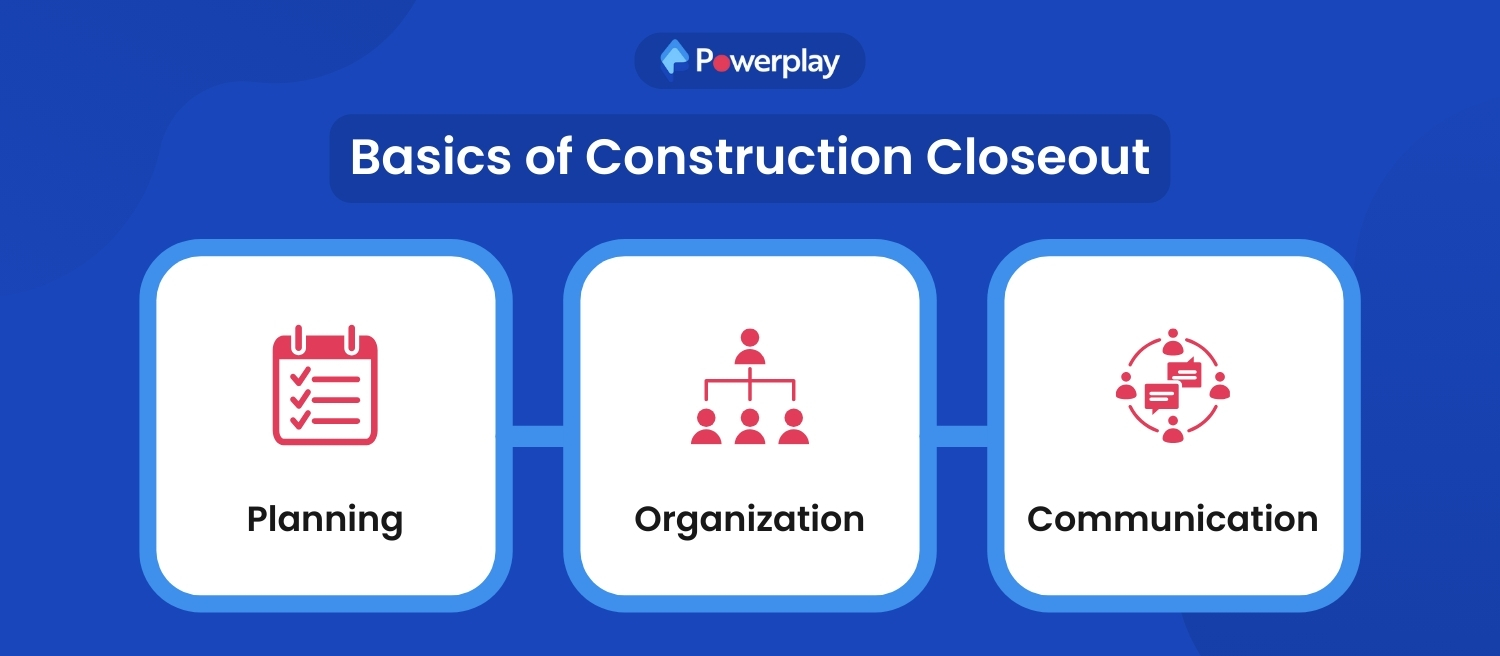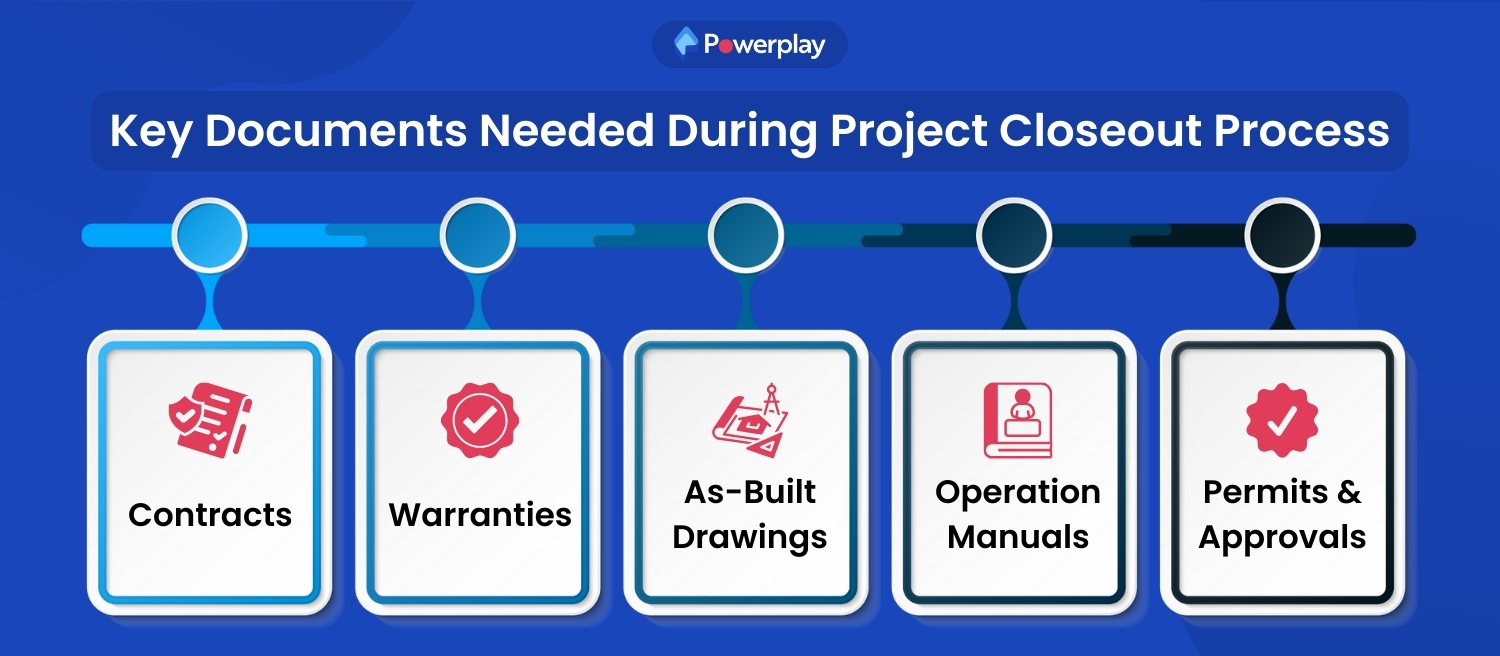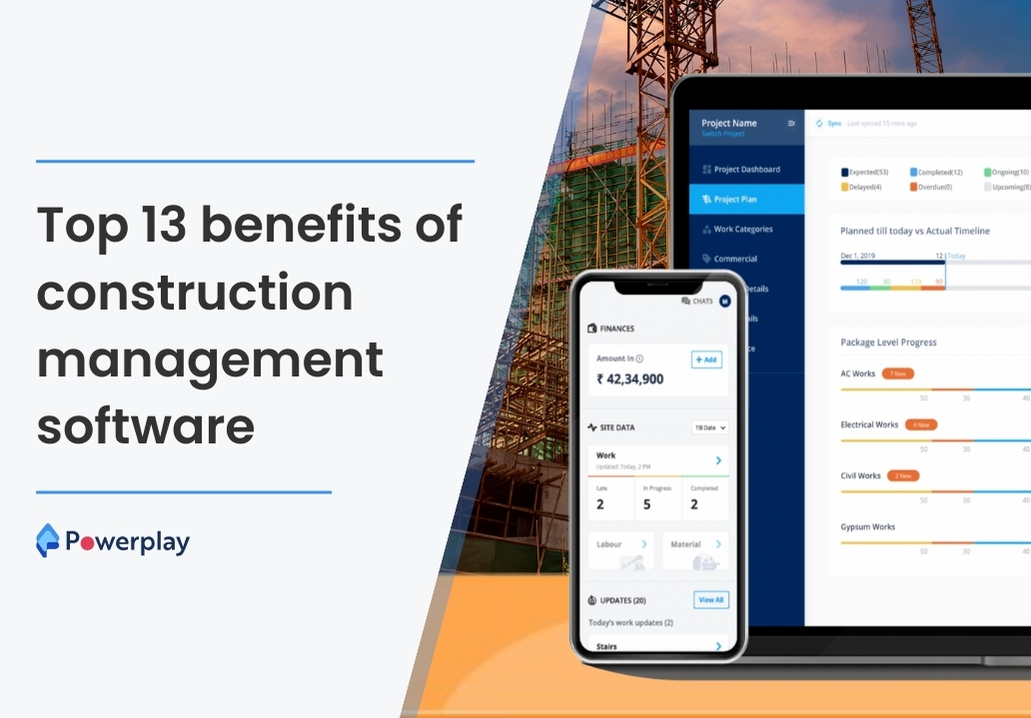The Construction Closeout Process Explained
-
 Dharmesh Dave
Dharmesh Dave
- July 2, 2024

In the realm of construction, the construction project closeout phase marks the culmination of a project—a critical juncture where meticulous attention to detail ensures that all loose ends are tied up, and the project is officially handed over to its owner.

Understanding the construction closeout process is essential for ensuring a smooth transition from construction to occupancy or operation. Let’s delve into the intricacies of this crucial phase.
Table of Contents
The Basics of Construction Closeout Process

At its core, the construction closeout process encompasses several key elements: planning, organisation, and communication. These pillars form the foundation for a successful closeout, ensuring that all stakeholders are aligned and informed every step of the way.
Planning
Effective planning sets the stage for a seamless closeout in the final phase of a construction project. This involves outlining clear timelines, identifying deliverables, and establishing roles and responsibilities. A well-crafted plan anticipates potential challenges and defines strategies to mitigate them, thereby streamlining the entire process.
Organisation
Central to construction closeout is meticulous organisation. From compiling contract documents to coordinating inspections and final walkthroughs, organisation ensures that no detail is overlooked. It involves maintaining comprehensive records, tracking progress, and adhering to regulatory requirements—all crucial for achieving project objectives.
Communication
Open and transparent communication is paramount throughout the closeout process. Stakeholders, including contractors, subcontractors, and the project manager, must maintain regular dialogue to address concerns promptly and foster collaboration. Effective communication fosters trust and minimises misunderstandings, crucial for delivering a successful project.
What Happens When Closeout Goes Poorly

Delays in Project Completion:
- Unresolved Issues: Failure to address punch list items and outstanding tasks can delay the official completion of the project.
- Final Inspections: If deficiencies are identified during final inspections, they must be rectified before obtaining necessary approvals, prolonging the closeout period.
Cost Overruns:
- Additional Work: Addressing unresolved issues and deficiencies can incur unexpected costs in terms of labor, materials, and project management.
- Penalties: Delays in achieving substantial completion or obtaining regulatory approvals may result in financial penalties or contractual liabilities.
Stakeholder Dissatisfaction:
- Client/Owner Discontent: Delays and cost overruns can lead to dissatisfaction among clients or owners, impacting their perception of the project’s success and the contractor’s reliability.
- Subcontractor Relations: Poorly managed closeout can strain relationships with subcontractors who may face delays in receiving final payments or resolving outstanding issues.
Incomplete Documentation:
- Missing Information: Failure to compile or provide essential closeout documents such as warranties, as-builts, and operation manuals can hinder future maintenance and operation efforts and may indicate that not all project requirements have been satisfied.
- Legal and Compliance Risks: Incomplete documentation may lead to non-compliance with regulatory requirements, potentially resulting in legal disputes or fines.
Damage to Project Outcomes:
- Quality Concerns: Inadequate closeout procedures may result in compromised construction quality, affecting the long-term durability and functionality of the facility.
- Reputational Impact: Poor project outcomes can tarnish the contractor’s reputation and credibility, impacting future business opportunities and client referrals.
Strained Relationships:
- Contractual Disputes: Disagreements over unresolved issues or incomplete deliverables can escalate into legal disputes, prolonging project closure and increasing costs.
- Trust Issues: Stakeholders may lose confidence in the contractor’s ability to deliver on commitments, leading to strained professional relationships and diminished collaboration on future projects.
Eight Steps to a Successful Project Closeout

1. Substantial Completion
Substantial completion is a pivotal milestone in the construction closeout process. It signifies that the project is nearly finished, with only minor tasks or touch-ups remaining. This stage allows the owner to occupy or utilise the facility for its intended purpose, even as final details are completed.
Key Activities:
- Walkthroughs: Conducting final walkthroughs to identify and document any remaining incomplete items.
- Punch List Creation: Generating a punch list that itemises tasks needing completion before final acceptance.
- Client Acceptance: Seeking client or owner acceptance that the project meets the basic requirements for use.
Importance: Achieving substantial completion marks a critical transition from construction to operational phases. It allows stakeholders to begin utilising the facility while ensuring that any remaining work does not impede functionality or safety.
2. Completion of Punch List Items
The punch list consists of items identified during inspections or walkthroughs that require rectification or completion to meet contract specifications and quality standards.
Key Activities:
- Prioritisation: Sorting punch list items by criticality and impact on usability.
- Resolution: Addressing each item methodically, often involving subcontractors and suppliers.
- Verification: Conducting follow-up inspections to confirm satisfactory resolution of punch list items.
Importance: Clearing the punch list ensures that the project achieves final compliance with design and quality expectations before formal acceptance and handover.
3. Submission of Closeout Documents
Closeout documents encompass a range of critical paperwork that validates the project’s completion and compliance with contractual obligations.
Key Documents:
- As-Built Drawings: Updated drawings reflecting any changes made during construction.
- Operation and Maintenance Manuals: Detailed instructions for operating and maintaining the facility.
- Warranties and Guarantees: Documents providing assurances for materials and workmanship.
- Certificates and Permits: Official approvals and permits necessary for regulatory compliance.
Process:
- Compilation: Gathering all required documents from contractors, subcontractors, and suppliers.
- Review: Ensuring accuracy and completeness of all documentation.
- Submission: Providing documents to the owner or relevant authorities as per contractual requirements.
Importance: Comprehensive and accurate closeout documents are essential for future maintenance, renovations, and legal compliance. They serve as a vital resource for facility managers and owners.
4. Final Inspection
A final inspection is a thorough assessment conducted to verify that all construction work meets quality standards, safety regulations, and contractual specifications.
Key Activities:
- Comprehensive Evaluation: Examining all aspects of the project, including structural integrity, mechanical systems, and finishes.
- Documentation: Recording findings and documenting any discrepancies or deficiencies.
- Approval Process: Obtaining approval from inspectors, architects, engineers, and the client or owner.
Importance: Final inspections ensure that the completed project aligns with agreed-upon standards and specifications, providing assurance of quality and compliance.
5. Training
Training sessions are conducted to familiarise end-users with the operation and maintenance of the completed facility or infrastructure.
Key Activities:
- Training Programs: Developing tailored training programs based on the facility’s complexity and user needs.
- Hands-On Instruction: Providing practical demonstrations and hands-on training where applicable.
- Documentation: Supplying user manuals and guides as part of the training package.
Importance: Proper training enhances user satisfaction and operational efficiency, reducing the likelihood of misuse or premature wear of systems and equipment.
6. Final Payments and Release of Retainage
Final payments and the release of retainage involve settling financial obligations with contractors and subcontractors upon successful project completion. Contractors submit an application summarising all completed work and requesting the final payment for the project, including details of tasks performed, adjustments due to change orders, and factors affecting the final payment amount.
Key Activities:
- Financial Reconciliation: Verifying that all work has been satisfactorily completed as per contract terms.
- Retainage Release: Releasing withheld funds once all conditions and requirements are met.
- Contract Closure: Finalising financial transactions and ensuring all parties agree on payment terms.
Importance: Timely and accurate financial settlements promote positive contractor relationships and compliance with contractual obligations.
7. Transfer of Utilities and Facilities
The transfer of utilities and facilities involves shifting operational control and responsibility from the contractor to the owner or operator.
Key Activities:
- Utility Notifications: Notifying utility providers of operational changes and ownership transfer.
- System Testing: Conducting tests to verify functionality and readiness for operational use.
- Handover Procedures: Formalising the transfer through documentation and agreements.
Importance: Seamless transfer ensures uninterrupted service and operational readiness, minimising downtime and disruptions.
8. Acquisition of Certificate of Occupancy For Construction Project
The Certificate of Occupancy (CO) is a crucial document issued by local authorities or regulatory bodies, indicating that the building complies with applicable building codes and is safe for occupancy. It is an essential part of a successful construction project closeout, ensuring that all necessary steps have been taken to meet regulatory and safety standards.
Key Activities:
- Inspections: Completing all required inspections to ensure compliance with safety and building standards.
- Documentation Submission: Providing necessary documentation and approvals to regulatory authorities.
- Issuance: Obtaining the CO once all conditions and requirements are met.
Importance: The CO confirms legal occupancy and signals the completion of regulatory and safety requirements, allowing for lawful occupancy and use of the facility.
Key Documents Needed During Project Closeout Process

During the closeout phase of a construction project, several key documents are essential to validate compliance, ensure quality, and provide critical information for future maintenance and operations:
- Contracts: These documents outline the legal agreements between parties involved in the construction project, including scope of work, timelines, and financial arrangements.
- Warranties: Warranties assure the quality of materials and workmanship provided by contractors and subcontractors. They typically cover a specified period and detail obligations for repairs or replacements.
- As-Built Drawings: As-built drawings depict the final, constructed layout of the project. They reflect any modifications or deviations from the original plans during the construction process, serving as crucial references for future renovations or maintenance.
- Operation Manuals: These manuals provide comprehensive instructions on operating and maintaining the facility or infrastructure. They include details on systems, equipment, safety procedures, and maintenance schedules, ensuring efficient and safe operation post-construction.
- Permits and Approvals: Regulatory permits and approvals confirm that the construction project complies with local building codes, zoning regulations, environmental requirements, and safety standards. These documents are essential for legal occupancy and operation of the facility.
Responsibilities During Closeout
Each stakeholder in the construction closeout process has distinct responsibilities to ensure the project concludes successfully and meets all contractual obligations:
General Contractor:
- Oversees Closeout Activities: Manages the entire closeout process, ensuring that all contractual requirements are met and coordinating with subcontractors to complete outstanding tasks.
- Ensures Completion per Contract: Verifies that all construction work meets quality standards and specifications outlined in the contract.
- Coordinates with Subcontractors: Facilitates communication and collaboration among subcontractors to resolve any remaining issues or deficiencies.
Owner:
- Reviews and Accepts Deliverables: Evaluates final deliverables, including completed construction and documentation, to ensure they meet expectations and contractual requirements.
- Facilitates Inspections: Coordinates and participates in final inspections to verify that all work is completed satisfactorily and complies with building codes and regulations.
- Manages Financial Settlements: Oversees final payments to contractors and subcontractors, including the release of retainage, once all conditions of the contract are fulfilled.
Architect/Design Team:
- Provides Final Approvals: Reviews as-built drawings and verifies that construction matches design specifications. Approves the final completion of the project.
- Updates Drawings as-Built: Documents any changes made during construction in the as-built drawings to reflect the actual constructed conditions.
- Resolves Design-Related Issues: Addresses any discrepancies between the original design and the constructed project, providing solutions and approvals as necessary.
Subcontractors:
- Complete Outstanding Work: Finish any remaining tasks or punch list items assigned to them within the agreed-upon timelines.
- Submit Necessary Documentation: Provide all required documentation, including warranties and certifications, to the general contractor or owner as part of the closeout process.
- Participate in Final Inspections: Assist in final inspections to ensure that their work meets quality standards and contractual requirements.
Suppliers/Vendors:
- Deliver Final Materials: Ensure timely delivery of any remaining materials or equipment needed to complete the project.
- Provide Warranties: Supply warranties for materials or equipment provided, detailing terms and conditions for repair or replacement.
- Support Completion Documentation: Assist with compiling necessary documentation, such as material certifications and product data sheets, to validate compliance and facilitate project closeout.
After Closeout
Following closeout, ongoing responsibilities include conducting project debriefs to capture lessons learned, archiving project documents for future reference, and addressing any warranty-related issues that may arise.
Conclusion
The construction closeout process is a critical phase that demands meticulous planning, organisation, and communication. By adhering to structured steps and maintaining transparency among stakeholders, construction teams can achieve successful project outcomes while ensuring client satisfaction and regulatory compliance. Embracing these principles not only facilitates a smooth transition from construction to occupancy but also lays the groundwork for future project success.
Share

Dharmesh Dave is a communications professional with eight years of experience in crafting PR, branded, and marketing content for real estate and construction industries. His passion lies in the art of creative storytelling, making him a zestful force in the field of communication.












